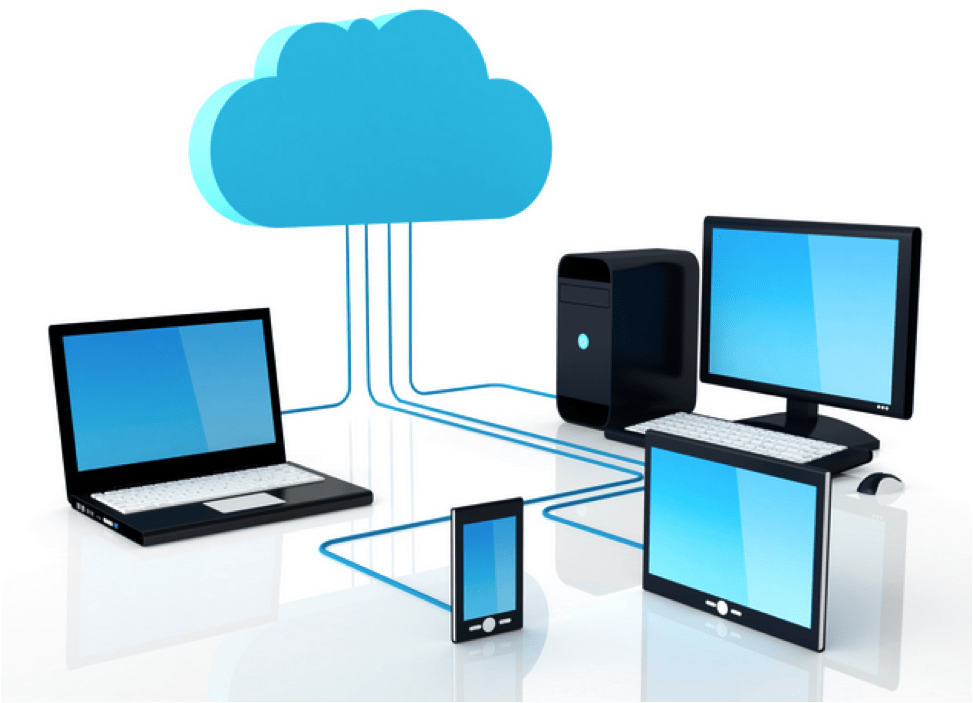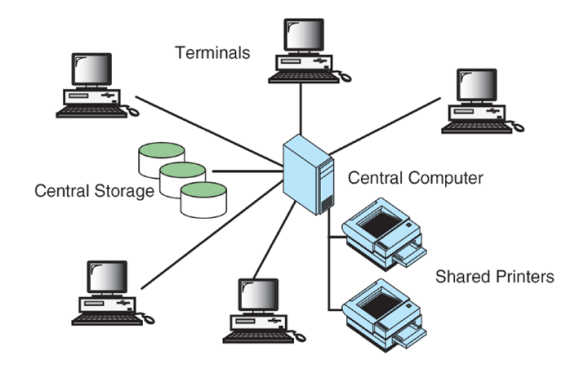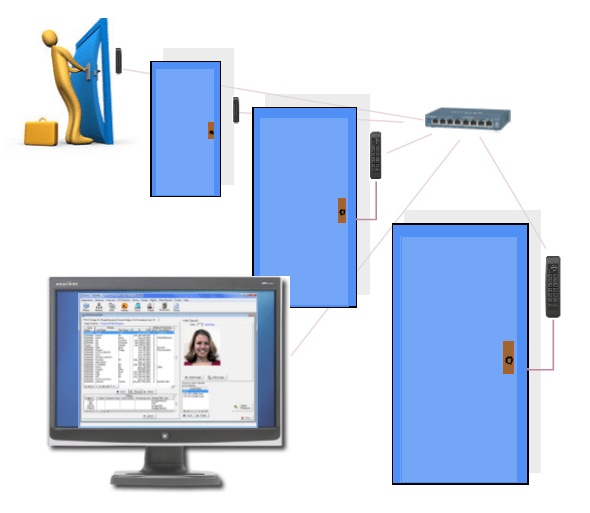Cloud Versus On Site License for Access Control

Many software applications are offering cloud-based, subscription software rather than on-site (or on-premise) license software. For example, Microsoft 365 and Adobe provide cloud-based, subscription plans. Recently Door Access Control software has become available in the cloud.
What exactly does this mean and what is better for you? The article compares the two methods and provides pros and cons that can help you decide what is best.
What is the difference between cloud and on premise software? On site software is the classic model of providing a perpetual license that allows you to run the software on your own computer. Cloud software runs on a remote server and is provided under a monthly or yearly subscription plan. For example, there is on premises door access software called Pure Access Manager. The cloud application is called Pure Access Cloud.
Cloud Computing Background

The concept of cloud computing began in the 1960s with the introduction of time-sharing systems. This was the original “cloud” system. Many computer terminals (like the IBM 3270) were connected to the mainframe computer or connected over phone lines (using modems). Many users could share the resources of the central computer system. This concept allowed smaller companies, who couldn’t afford the large mainframe computer, to utilize the services of a centralized resource. For example, an accounting program could be used by many people located in different locations.
Today, much more powerful computer systems are able to handle many applications as well as many remote users (over the Internet). The advent of high-speed Internet connections has helped to make this approach much more feasible.
Multiple computers are operated in server farms and provide increased performance, reliability, and security. Some people differentiate the terms “cloud storage” and “cloud computing”. Cloud storage is used to just store information, rather than provide computing services. It can be considered a subset of cloud computing. Various services such as Dropbox, Google Drive, and Apple iCloud are popular storage applications. Cloud Computing provides computer resources for applications such as web sites, scientific simulations, and computations, as well as door access control and remote IP security video management.
Cloud Systems

Cloud computing is more than just shared resources. Besides providing faster computing processors, it also increases reliability and security. The computer resources are also more flexible, allowing easier expansion of services.
The pros of Cloud Computing
- Cost reduction for software services: Capital Expense is reduced because you don’t require a local computer server, and the software is considered a monthly expense rather than a capital purchase.
- Device and location independence: Users can use a web browser no matter where they are. As more and more people work off-site, remote access capability becomes very important. This is an excellent solution for multi-site organizations that would like central or even regional control.
- Maintenance and support of cloud computer systems are much easier to handle since you don’t need to install anything on any of the local computers. Your information is backed up at the center. This provides secure data retention that can be used in case of any disaster.
- Software upgrades are handled by the cloud service rather than your own staff.
- Reliability improves since cloud services typically provide redundant systems.
- Security: This is both a pro and a con (see below). Managed services include increased security. There are arguments that suggest that server farms have dedicated people that maintain security which is more sophisticated than a small organization can provide. On the other hand, this can also be considered a problem because any services that use the Internet can theoretically be hacked.
- Improved disaster recovery: We usually back up our computers, but we don’t always remove the backups from our facility. If we don’t then some disaster could cause quite a problem. Cloud systems are off-premises, thus making much easier to recover from a local problem.
The Cons of Cloud Computing
- Loss of local Internet connectivity: If the Internet is down at your location, then so is your application. There is a fall back plan for those applications that also run on your smartphone. A cell connection can be used instead of your Internet connection to provide an alternative communication path to the cloud.
- Cloud service failure: There are some cases where remote servers become unavailable. The reasons for failure range from loss of Internet at the host site, to computer system failures. System failures include hacking, hardware failures, and even operator error. Amazon services were down for 5 hours in March 2017 because of a typo. I have to also mention that these failures are extremely rare.
- Ongoing subscription cost: There is a monthly or yearly charge for the application. This is usually considered an expense rather than a capital purchase. In some organizations, this is a pro rather than a con. It depends on your organization and how they handle the budget.
- Security: There are some organizations that don’t allow Internet connection to key computer resources. In this case, the on-premises solution is best. In general, it depends on the level of security your own organization can provide. If you are confident in your own security organization, you can feel more comfortable using an on-site solution.
On-Premise License

The on-site license is the classic way of purchasing software. It allows you to load the software on one or more network-attached computers.
Pro of On-Site License
- Internet Security: An on-premises license, can be isolated from the Internet. Some governments and other organizations require this level of security.
- Less expensive over time: The standard license is less expensive in the long run. Unfortunately, it may take over 3 years to achieve a cost-benefit. At that point, you may have to purchase the next-generation software. Since you only purchase the software license once, it is considered to be capital equipment rather than a monthly expense. There is usually a software upgrade plan that provides software updates that should be added to your total cost calculation.
- Availability: Software that runs on your own computer network is independent of the Internet. It is available even if your local Internet connection is down.
- The flexibility of Solutions: You are not locked into a specific solution. You may find more than one vendor providing similar solutions. You have the easy flexibility of changing your software platform at any time.
- Privacy and Security: You control your own data. It is not available to anyone else including government intrusion or hacking of large cloud services. You must provide your own security, but at least it’s under your control.
Con of On-Site License
- Higher initial expense: On-site licenses can cost up to 3 to 5 times the monthly cost of cloud service. It can take over 3 years to break even.
- Multi-site organizations could require more than one site license.
- Maintenance and support: There is usually some software upgrade plan for maintaining your software. As operating systems and networks evolve, it is important to update your software to be compatible.
- Security is a challenge: This depends on the level of security you can provide on-site. This can be a challenge for smaller organizations.
Summary
The latest versions of door access control systems are moving to cloud platforms. These systems are not for everyone, but they certainly are becoming more popular. Internet speeds and the availability of flexible cloud services have increased the benefits of these systems.
Determining whether these are a good fit for your system is all about evaluating options. The question to ask is: Does one build it, buy it, or manage and maintain their system locally? Sometimes yes, sometimes no.
If you need help deciding which door access software platform is best for you, please contact us. We can be reached at 800-431-1658 in the USA, and at 914-944-3425 everywhere else, or use our contact form.